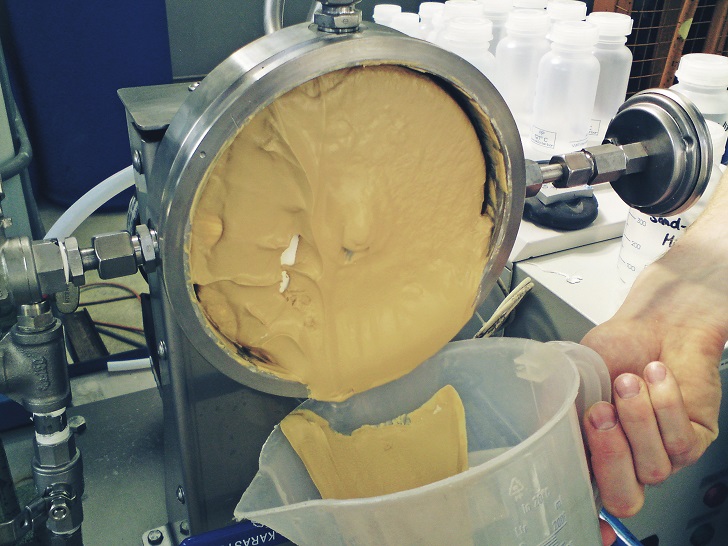
The dynamic cross flow filtration (DCFF) with rotating ceramic membranes combines a lot of advantages which make this technique to an outstanding separation method for intricate applications. The benefits of rotation filtration start where other techniques reach their limits.
Filtration in industrial applications is a process which ideally runs continuously with high throughput. In order to achieve this, the growth of a filter cake must be inhibited. Therefore, the conventional cross flow method has gradually established. High amounts of suspensions are moved by huge pumps towards the membrane surface in order to overflow it tangentially.
Filter cake While some proportions of the liquid pass the membrane, others constantly remove the filter cake. The solid content is increased during that circular process. Usual setups for the technique are tubular membranes (inside-out) or filter plates (outside-in). The growth of the filter cake, however, cannot be completely suppressed; the system must be backflushed with filtrate from time to time to maintain a profitable performance. The main throwback of this method, though, is the drastically higher energy consumption during the re-circulation of the suspension.[1]
In contrast, the filtration with the dynamic cross flow technique does not need pumps to generate the cross flow. A small motor rotates a stack of ceramic membrane discs instead.The filtration takes place in a pressurized housing from the outside to the inside of the filter discs while the cross flow primarily arises from the moving membrane surface. The filtrate is then drained off through a hollow shaft. This represents a particularly energy-saving concept which takes away the disadvantage of continuous filtration techniques in general.
Beyond that, the cross flow velocity generated by the rotation of the membranes carries another advantage. At given plant-specific parameters, operating temperature and solid content, the permeate flux is impacted by two main factors: transmembrane pressure (TMP) and cross flow velocity.[2] While these values are connected in conventional systems since a higher cross flow velocity can only be obtained with an increased pressure moving the suspension, they decouple to two variables in DCFF. That means these two key figures can be independently adjusted and therefore the settings can be tailored to the respective application.
Velocity increase The decoupling into two variables enables to increase the cross flow velocity many times over while keeping the TMP at an appropriate level. This fact brings two further advantages. The rotational speed of the discs gets the basic idea of cross flow filtration back on the table: the high shear forces are more capable to remove the filter cake from the membrane surface. This results in a higher maintained flux compared to conventional cross flow filtration.
The second advantage which goes hand in hand with the decoupled cross flow velocity is the possibility to handle very high solid contents. The rotating membrane stack cuts through the vicious suspension and provides a homogeneous distribution of the solid particles through turbulence. This ability is essential both in order to gain a high yield in the filtrate and to obtain highly concentrated pastes.
All these method-specific benefits are combined with the preferences of KERAFOL membrane discs. These discs are available in three standard geometries (Ø152, Ø312, Ø374) and several pore sizes in the micro and ultra filtration regime from 2 µm down to 5 nm. This product variety provides the right membrane for almost any application. The ceramic material itself stands for high temperature and chemical resistance and therefore allows both steam sterilization and cleaning in place while ensuring a long lifetime.
References
[1] Thomas Melin, 'Robert Rautenbach, Membranverfahren: Grundlagen der Modul- und Anlagenauslegung', Springer, 2013.
[2] Li Xianhui, Li Jianxin, 'Cross-Flow Filtration, In: Encyclopedia of Membranes', Springer, 2016.
[3] Brochure 'Efficient Crossflow Filtration – Kraus-Maffei Dynamic Crossflow Filter DCF' from ANDRITZ KMPT GmbH.





